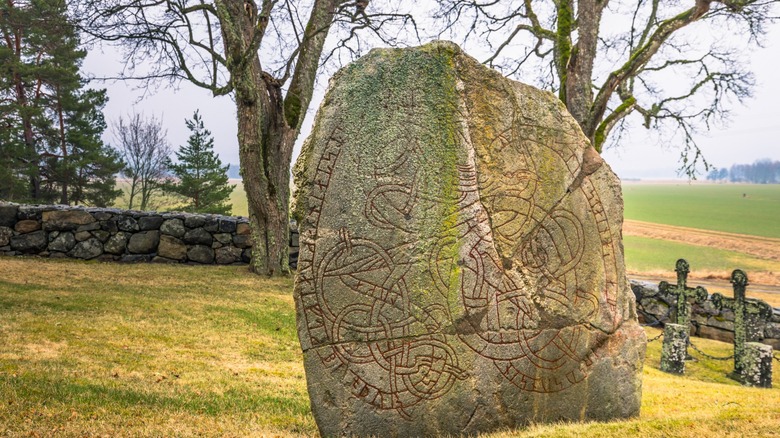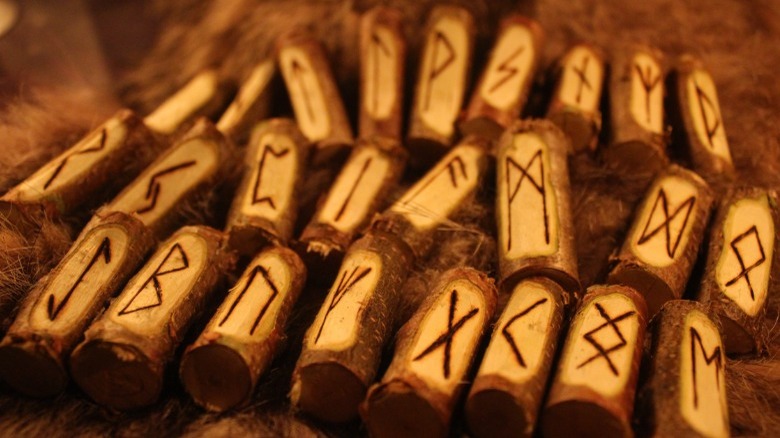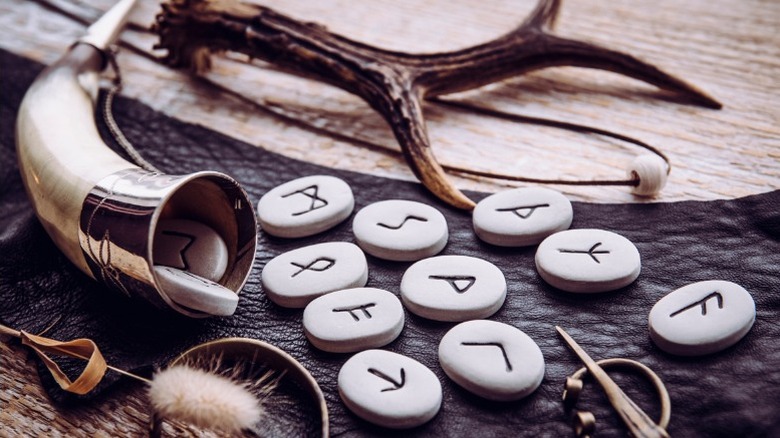What Archeologists Hope To Learn From The World's Oldest Runestone
Some of the first examples of the written word date back to as early as 3400 B.C., ( per History). Though the Sumerians are often credited with developing the first form of writing known as cuneiform, there are other ancient civilizations that developed their own ways of writing as well. Many examples that have been discovered of ancient script from the Egyptians, the Mayans, and the Chinese, and a recent discovery in Norway, can be added to that list.
In the latter part of 2021, an incredible find was made outside of Oslo, Norway (per Live Science). During the excavation of a gravesite in Tyrifjorden, archeologists stumbled across a stone that could only be described as ancient. Obviously in the world of archeology finding an old rock may not sound significant, but it would turn out that this was not just any stone. When looking a little closer, they found that there was something scrawled across the front. Those markings would turn out to be very historically significant.
A Unique Find
What had been unearthed would turn out to be what is called a runestone. These types of stones are engraved with runes, which is a "type of writing system used by Germanic peoples of northern Europe," according to Smithsonian Magazine. Stones like this are not always uncommon or outstanding finds, as there have been thousands of them discovered previously. This one, however, is unique due to the fact that it may be the oldest runestone ever unearthed.
This particular runestone was discovered in an ancient pit used for cremation along with burnt bones and charcoal. Those items helped scientists radiocarbon date the area and the other artifacts discovered to somewhere between A.D. 1 and A.D. 250 (per Smithsonian Magazine). That would make this particular runestone around 2,000 years old. Additionally, the location in which this artifact was discovered is known for another important historical finds, such as the Gjermundbu Viking helmet.
What Could This Discovery Mean?
Though the date on its own is impressive, the runes found inscribed on this rock are what make it stand out the most. Previous discoveries of older runes have been found on other items from the time period, but not in stone. Scholar Kristel Zilmer of the University of Oslo also speculates that this may be one of the first instances where runes were put on stone in Norway and Scandinavia. She further states that this discovery "will give us a lot of knowledge about the use of runes in the early Iron Age," (per Live Science). The stone will be called the Svingerud Stone, after the site where it was discovered.
The items that were scrawled across the stone were also analyzed meticulously. Though scholars generally agree that these runes were inspired by an ancient writing system of some kind, there is debate about which one. Some suggest that the runic alphabet was influenced by the Etruscans, while some speculate it may have its roots in the Latin alphabet. The three variations of this kind of writing changed as time passed and cultures mixed. This in turn makes finding the meaning of these particular runes more of a challenge, and their true meaning remains a mystery for now.


